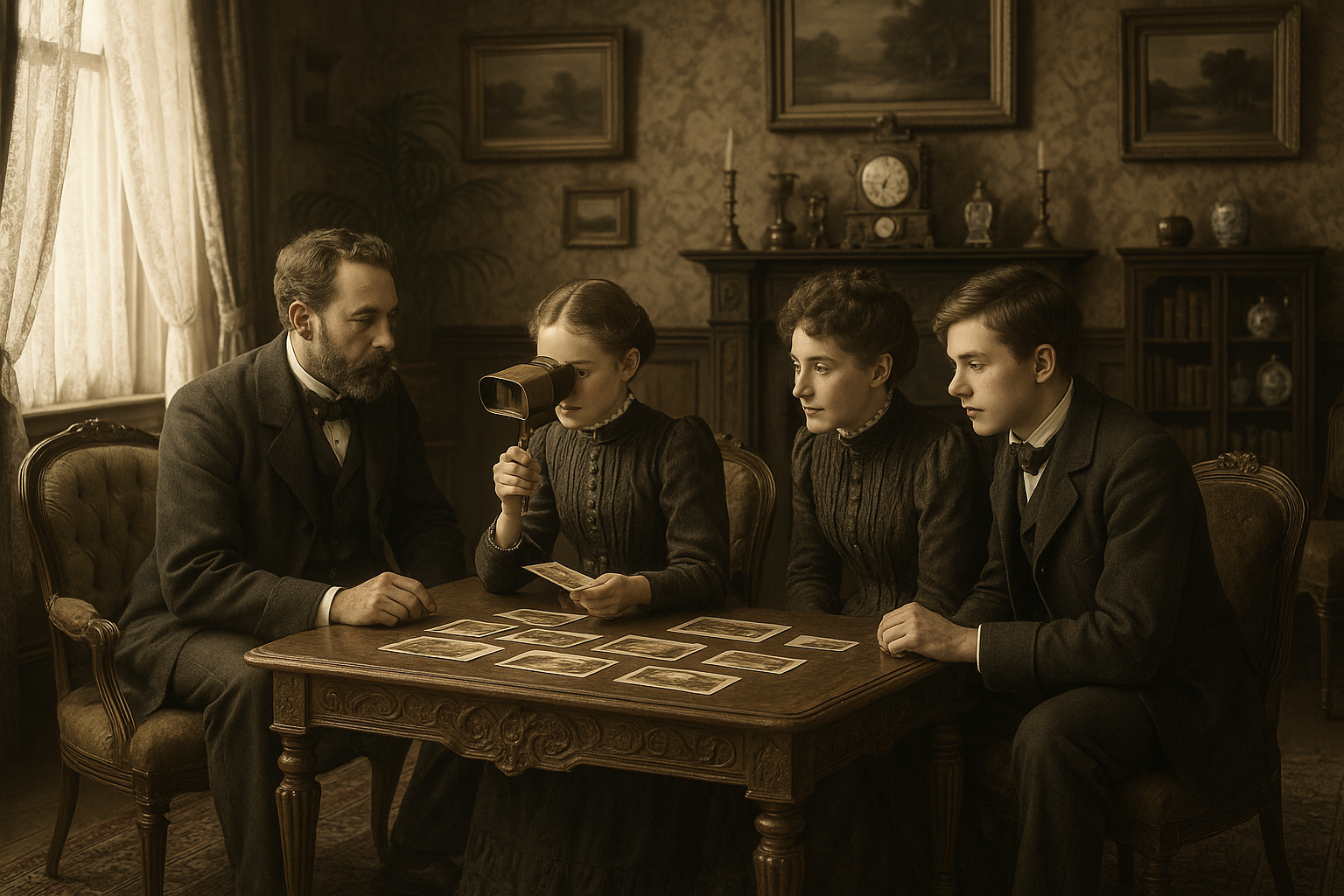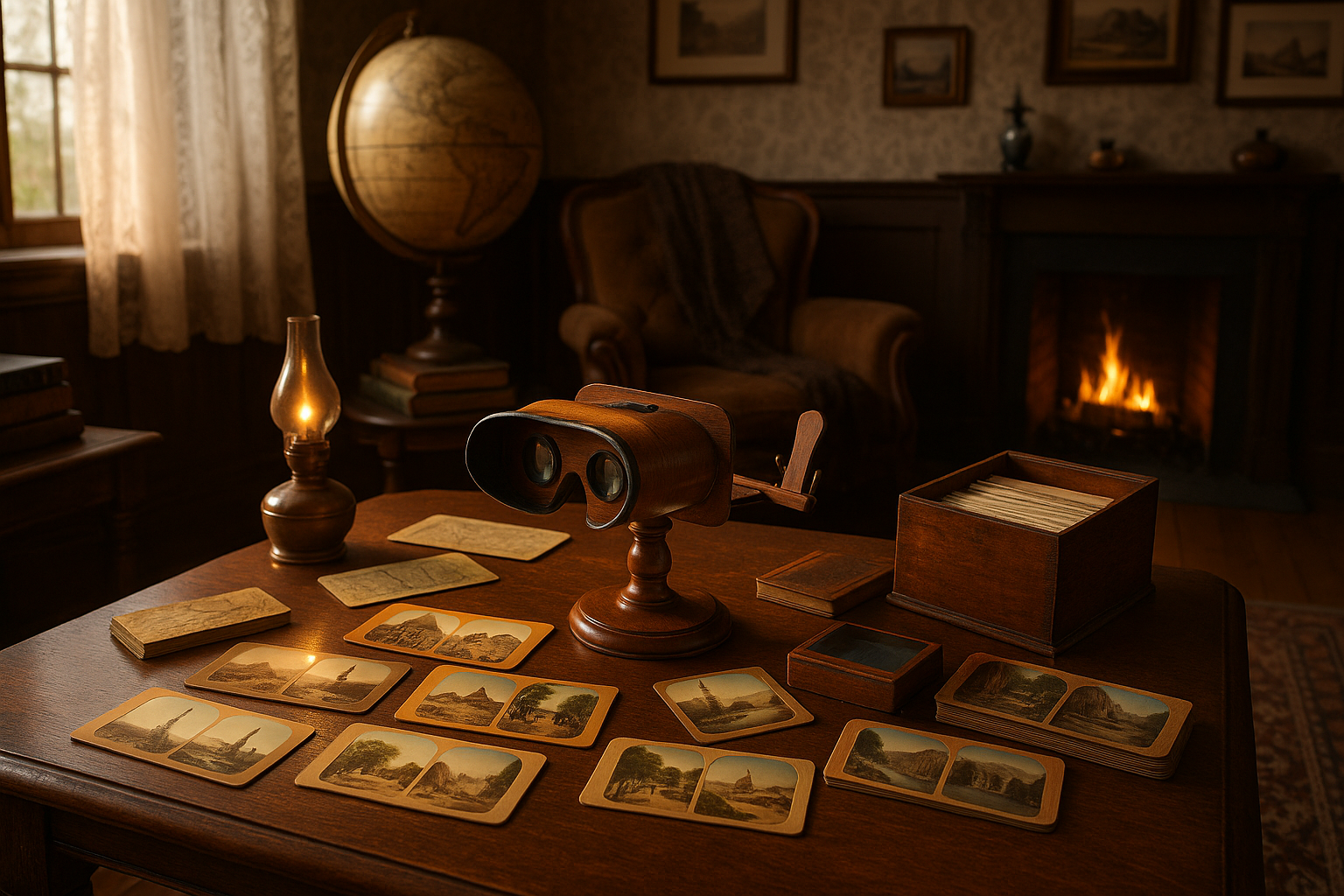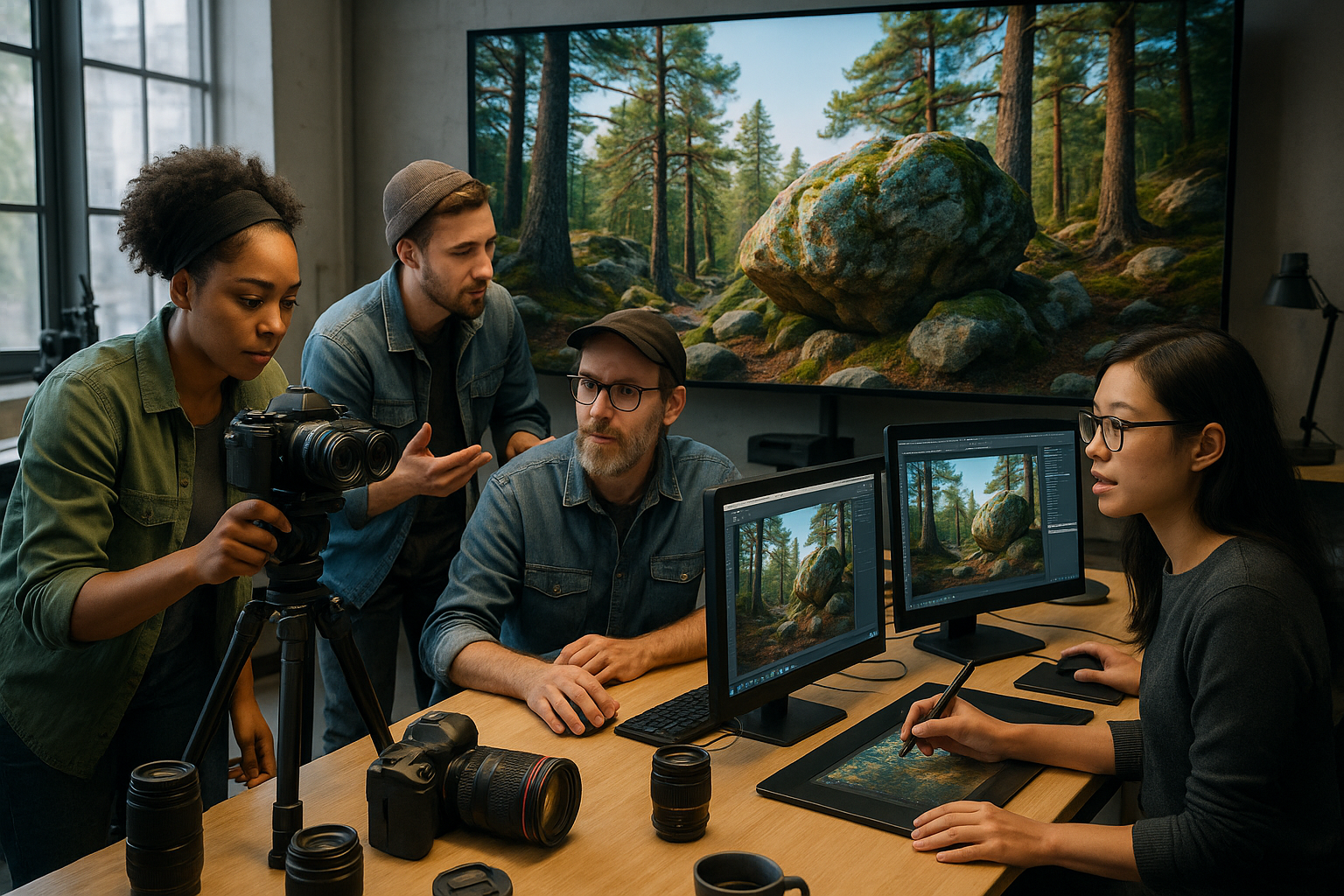In the captivating world of optics, where light dances with science to reveal the universe’s hidden secrets, there exists a treasure trove of knowledge born not just from success, but also from failure. The journey through the lens of history is peppered with tales of grand experiments that faltered, yet these so-called ‘lens fails’ are far from mere footnotes in scientific textbooks. They are, in fact, rich sources of insight, offering invaluable lessons that continue to shape and refine our understanding of optics today. Whether you’re a seasoned physicist, a curious student, or simply someone with a penchant for the mysteries of light, exploring these failed experiments offers a unique perspective on the relentless pursuit of innovation.
Failure, often seen as the antithesis of progress, is actually one of its most vital components. Every misstep in an optical experiment can illuminate the path to groundbreaking discoveries, shedding light on the intricate principles that govern our world. From the flawed designs of early telescopes to the miscalculations in the refractive indices, each error has contributed to a greater understanding and a more robust foundation for future innovations. This article delves into some of the most intriguing failed experiments in optics, not to dwell on their shortcomings, but to extract the precious kernels of wisdom they contain.
Imagine the anticipation in the laboratory, the air thick with the promise of discovery as scientists eagerly await the results of their latest experiment. Yet, when the findings do not align with expectations, disappointment can swiftly follow. However, these moments of ‘failure’ are pivotal—they challenge assumptions, inspire creative problem-solving, and ultimately lead to more refined techniques and technologies. For instance, the development of corrective lenses arose from early missteps in understanding vision and refraction, revolutionizing how we perceive and correct sight issues. Each of these so-called failures plays a crucial role in propelling science forward, demonstrating that the path to innovation is rarely a straight line.
Throughout this exploration, we will examine specific case studies of optical experiments that did not go as planned, from misjudgments in laser applications to early misconceptions in fiber optics. These stories are not just about what went wrong, but also about how these setbacks paved the way for breakthroughs. As we navigate through these narratives, we’ll uncover how each mistake served as a stepping stone, leading to a more profound comprehension of optical phenomena and their applications in today’s technology-driven world.
So, prepare to embark on a journey through the annals of optical research, where we’ll uncover how ‘lens fails’ have shaped the very lens through which we view the world. This article is an invitation to embrace failure as an essential part of the scientific process—a reminder that every setback holds within it the seeds of future success. By learning from these missteps, we not only honor the tenacity and ingenuity of past scientists but also inspire the next generation of thinkers to approach challenges with curiosity and resilience. After all, in the intricate dance of light and science, even the shadows cast by failure have their own story to tell. 🌟
Understanding Lens Fails in Optics
Optics is a fascinating field of physics that deals with the study of light and its interactions with various materials. One of the crucial components in optics is the lens, which is used to focus or disperse light. However, not all experiments involving lenses are successful. In fact, many experiments fail due to a variety of reasons, providing a rich source of learning opportunities. This article delves into the common mistakes in lens experiments, helping us understand how these failures occur and what can be learned from them.
The nature of light itself poses significant challenges. Light behaves both as a wave and a particle, a duality that can complicate experimental setups and lead to unexpected results. The design of lenses must take into account these properties, as well as the material characteristics of the lenses themselves. For instance, certain materials might introduce chromatic aberration, where different colors of light focus at different points, leading to blurred images.
In addition, the precision required in crafting lenses can be a source of errors. A slight imperfection in the curvature or surface of a lens can lead to significant distortion of images. Such imperfections might not be visible to the naked eye but can become apparent in sensitive optical setups. Therefore, understanding and mitigating these common errors is crucial for anyone working with optical lenses.
Common Mistakes in Lens Experiments
The failure of lens experiments often boils down to a few common mistakes, which include misalignment, material selection, and environmental factors. Misalignment can occur when lenses are not properly oriented in relation to each other or to the light source, leading to unfocused or distorted images. This is especially prevalent in complex optical systems where multiple lenses are used in conjunction.
Material selection is another frequent pitfall. Not all materials are suitable for all types of lenses. For example, glass is commonly used, but it may not be the best choice for high-precision applications due to its tendency to expand and contract with temperature changes. In some cases, specialized plastics or crystals might offer better performance.
Environmental factors such as temperature, humidity, and vibrations can also impact the performance of optical systems. Even slight changes in temperature can cause lenses to expand or contract, altering their optical properties. Vibration can lead to misalignment over time, especially in systems that require precise calibration. Recognizing and accounting for these factors is essential in designing robust optical systems.
Case Studies: Learning from Failed Experiments
Let’s delve into specific case studies that highlight the learning opportunities from failed lens experiments. One notable example involved a team attempting to create a high-precision telescope lens. Despite extensive calculations, the lens suffered from severe spherical aberration, a phenomenon where light rays striking the lens near its edge are focused at a different point than those near the center.
Upon investigation, it was discovered that the grinding process used to shape the lens had introduced minute imperfections, which were not accounted for in the initial design. The team learned the importance of precision in lens crafting and the need for rigorous quality control measures.
Another case study involved an optical communication system where lenses were used to focus laser beams for data transmission. The system failed to achieve the desired transmission speed due to chromatic dispersion, where different wavelengths of light traveled at different speeds through the lens material. This issue was resolved by switching to a different material with a lower dispersion coefficient, demonstrating the critical role of material selection in optical design.
Comparative Analysis of Materials Used in Lenses
Understanding the properties of various materials used in lenses is crucial for successful optical experiments. Below is a comparative table that highlights the key differences among common lens materials:
| Material | Refractive Index | Chromatic Dispersion | Thermal Stability |
|---|---|---|---|
| Glass | 1.5-1.9 | High | Moderate |
| Plastic | 1.49-1.6 | Medium | Low |
| Crystals | 1.6-2.1 | Low | High |
As you can see, each material has its own strengths and weaknesses, making it essential to choose the right one for the specific application. Glass is widely used due to its high refractive index, but its chromatic dispersion can be a drawback. Plastics are lightweight and versatile, but their thermal stability is limited. Crystals offer excellent thermal stability and low dispersion but can be expensive and difficult to work with.
Technological Innovations to Prevent Lens Fails
Advancements in technology have provided new tools and techniques to mitigate the common causes of lens failures. One significant innovation is the use of computer-aided design (CAD) software to simulate optical systems before physical prototypes are constructed. This allows researchers to identify potential issues in the virtual environment, saving time and resources.
Additionally, manufacturing technologies such as precision grinding and polishing have improved, enabling the production of lenses with fewer imperfections. These technologies ensure that lenses meet the stringent specifications required for high-precision applications. Furthermore, coatings that reduce reflection and improve transmission have been developed, enhancing the performance of optical systems.
Environmental controls are another area where technology has made significant strides. Modern optical systems can be equipped with sensors that monitor temperature, humidity, and vibration, automatically adjusting the system to maintain optimal performance. These innovations are crucial for applications in telecommunications, astronomy, and other fields that rely on precise optical systems.
Video Resource: Understanding Optics and Lens Design
To further your understanding of optics and lens design, consider watching this insightful video: “The Basics of Optics and Lens Design” by the Khan Academy. This resource provides a comprehensive overview of the fundamental principles of optics and how they apply to lens design.
Practical Tips for Successful Lens Experiments
Whether you’re a student or a seasoned researcher, practical tips can help ensure the success of your lens experiments. Firstly, always begin with a thorough literature review to understand the current state of research and common challenges. This will provide a solid foundation for designing your experiment and anticipating potential pitfalls.
Next, invest time in planning and designing your experiment meticulously. Use CAD software to model your optical system, and consider conducting small-scale tests before committing to a full-scale experiment. This can help identify issues early and allow for adjustments without incurring significant costs.
Finally, maintain rigorous documentation throughout your experiment. Record all parameters, observations, and any anomalies encountered. This documentation will be invaluable for troubleshooting and can also contribute to the body of knowledge in the field of optics. Remember, even failed experiments provide valuable insights that can lead to breakthroughs in understanding and innovation.
- Start with a comprehensive literature review to identify challenges and solutions in lens experiments.
- Use CAD software to simulate and refine your optical system design before physical implementation.
- Document all experimental procedures and findings meticulously for future reference.

Conclusion
Certainly! Here’s a conclusion you can use for your article:
—
In conclusion, the exploration of “Lens Fails: Learning from the Mistakes of Failed Experiments in Optics” has provided us with a comprehensive understanding of how setbacks and failures in the field of optics can be transformed into valuable learning experiences. Throughout this article, we have delved into several key areas that illuminate the broader impact of these failures, as well as the opportunities they present for growth and innovation.
We began by examining historical case studies where significant breakthroughs were preceded by numerous failed attempts. These examples highlighted the iterative nature of scientific discovery, where each failure serves as a stepping stone toward eventual success. By reflecting on these instances, we gain insight into the resilience and determination required to advance the field of optics.
Further, we discussed the technical aspects and challenges associated with lens design and optical experiments. The intricacies involved in achieving the perfect alignment, precision, and functionality underscore the complexity of the discipline. Mistakes in these areas, whether due to material limitations or human error, offer critical lessons that drive improvements and innovations.
The article also underscored the importance of embracing a culture of openness and learning within scientific communities. By fostering an environment where researchers can share their failures without fear of judgment, we encourage collaboration and the cross-pollination of ideas. This approach not only accelerates progress but also inspires creativity and bold experimentation.
Moreover, the discussion highlighted the role of modern technology in analyzing and learning from past failures. Advanced simulation tools and data analytics provide researchers with new ways to model experiments, predict outcomes, and identify potential pitfalls before they occur. These technologies are instrumental in minimizing costly errors and optimizing research efforts.
Throughout this exploration, we reiterated the significance of maintaining a growth mindset—one that views failures not as endpoints but as opportunities for learning and improvement. This mindset is crucial for innovation, as it enables researchers to push boundaries, take calculated risks, and ultimately, drive the field forward.
As we conclude, it is essential to recognize that the journey of scientific discovery is fraught with challenges, but it is precisely these challenges that fuel our passion and commitment to advancing knowledge. The field of optics, with its vast potential and transformative applications, continues to offer exciting prospects for those who dare to venture into the unknown.
We encourage you, our readers, to take these insights and apply them to your own pursuits, whether in optics or any other field of endeavor. Embrace failures as opportunities to learn, grow, and innovate. Share your experiences, engage in dialogue, and contribute to a culture of collective learning and progress.
We also invite you to share this article with colleagues and friends who may benefit from its insights. By spreading knowledge and fostering discussions, we can collectively enhance our understanding and appreciation of the scientific process.
—
This conclusion aims to encapsulate the essence of your article while motivating your readers to engage and reflect on the discussed topics.
Toni Santos is a visual historian and artisan whose creative lens is captivated by the forgotten marvels of antique optical devices. Through his thoughtful storytelling, Toni revives the instruments that once transformed light into wonder—camera obscuras, magic lanterns, kaleidoscopes, and other ingenious tools that shaped our earliest visual imaginations.
His journey is rooted in a fascination with how humans have long sought to bend, reflect, and reveal the unseen. Whether tracing the mechanical poetry of 19th-century projectors or illustrating the tactile elegance of early lenses, Toni’s work invites us to see vision itself as an evolving art form.
Blending handcrafted design with historical inquiry, Toni brings to life the material soul of these devices—celebrating not just how they functioned, but what they meant. His creations and curated stories illuminate a world where science, illusion, and beauty were intricately linked through glass and brass.
As the curator of Vizovex, Toni shares detailed studies, reconstructed artifacts, and immersive content that help others rediscover the origins of visual technology and the magic of analog perception.
His work is a tribute to:
The craftsmanship behind early visual instruments
The wonder of seeing through the eyes of another century
The intersection of optics, art, and imagination
Whether you’re a collector, a designer, or someone drawn to the lost poetry of vision, Toni welcomes you into a world where light is a storyteller—one prism, one lens, one forgotten invention at a time.





